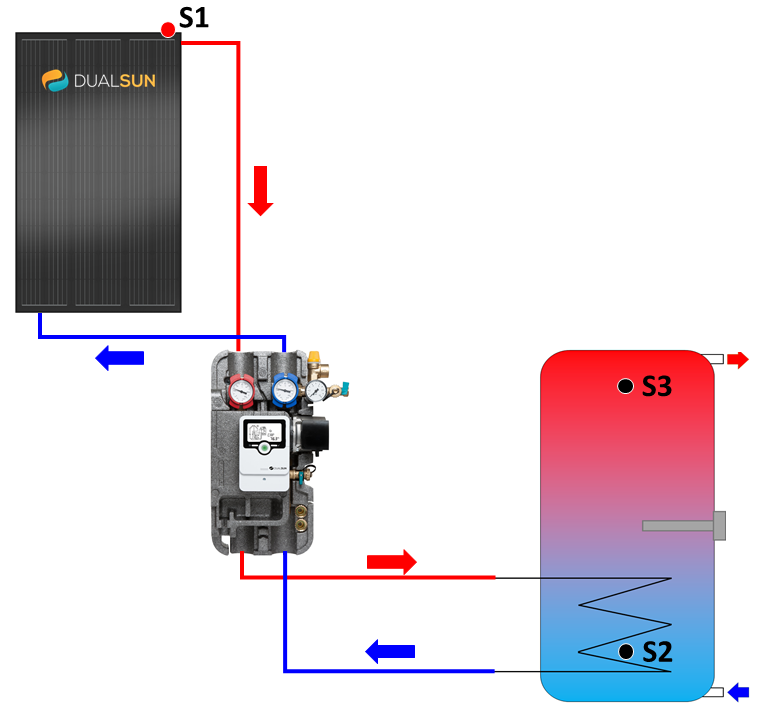How do I choose the best DualSun configuration to heat both my domestic hot water (DHW) and my pool?
There are two possibilities for a solar water heater and pool heating application:
solar water heater offer (CESI) + direct pool heating = 2 independent systems
offer solar water heating with pool discharge (CESI Décharge piscine) = 1 system with 2 solar circulation loops
The main decision elements are as follows:
Size of the available locations for the installation of the panels
Distance, height and travel accidents between the panels, the hot water tank (DHW) and the swimming pool
Difficulty and technicality of implementation
Budget
Solar domestic hot water preparation (ISWH)
The dimensioning of the number of DualSun SPRING panels is based on the domestic hot water (DHW) requirement. 2 solutions are possible:
DHW Solution 1: Solar DHW preheating with buffer tank
A solar storage tank without a back-up can be installed in series upstream of the existing tank.
This option represents the maximum savings in DHW via solar energy and at the same time offers the highest level of user comfort. The main constraint is then the available floor space in the technical room to add a new storage tank before the existing DHW storage tank.
DHW Solution 2: Replacement of the existing storage tank by a solar storage tank with a booster
In this case, the customer benefits from a new solar storage tank.
Solar pool heating
For solar heating of a swimming pool, 2 solutions are also possible:
Pool heating solution 1: The swimming pool is close to the house, where the hydraulic path between the pool and the house is easily possible.
A CESI system with discharge to the pool can be considered.
The dimensioning of the number of panels is based on the dimensions of the pool. The total number of panels must be equivalent to at least 50% of the pool surface. A thermal cover for the pool remains in all cases essential.
The discharge to the pool occurs when the domestic hot water (DHW) tank reaches the set temperature.
This is the CESI 1 or 2 solution above with the combination of an additional solar circulation circuit to discharge to the pool:
This installation has the highest level of technicality both on the aspects of regulation and hydraulic realization.
Pool heating solution 2
If any of the following reasons arise:
The dimensioning of the installation results in more than 12 panels.
The pool is far from the house,
The roof of the building where the hot water tank is located is not sufficient to install the required number of panels,
The hydraulic path between the pool and the house is complex.
A combined ISWH and pool discharge system would be too complex. A ISWH system for the preparation of hot water for the house and an independent system of direct pool solar heating (diagram below) are to be considered.
This installation is technically simpler:
to implement (gluing PVC fittings),
to activate (filling via filter pump)
to control (controlled 3 way valve).
However, the power of the filter pump in place must be verified and that it is possible to drain the system in winter.
It also has the significant advantage of using non-insulated SPRING panels, which are more efficient in the temperature range of the pool and less expensive!

